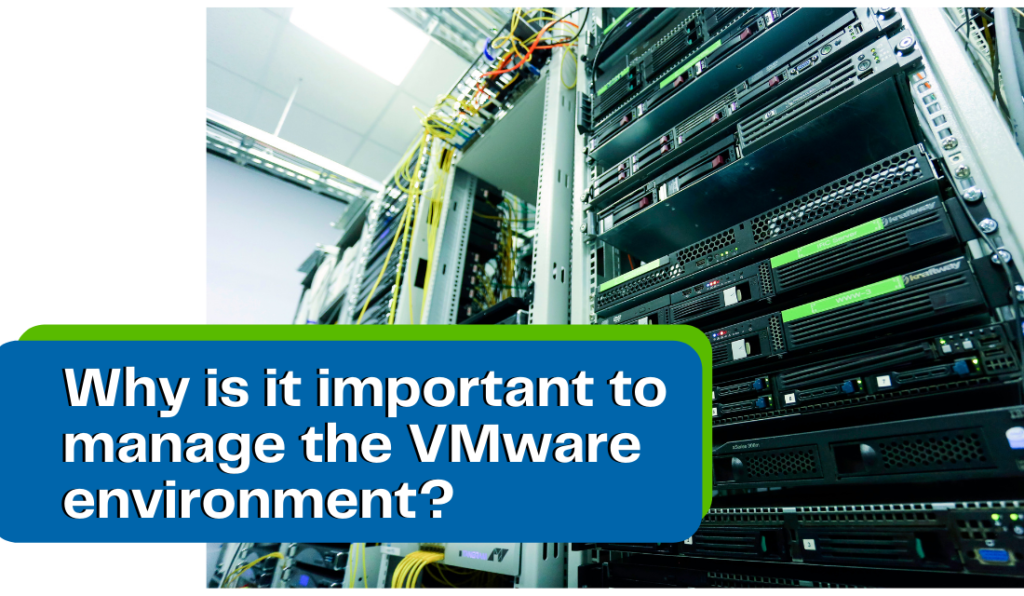

VMware virtualization has been widely implemented in all types of organizations, and with the boom of digital transformation that the COVID-19 imposed, organizations have both migrated from legacy physical servers to VMware virtualized servers and increased the number of virtual machines in their infrastructures.
Despite VMware virtualization is a highly reliable technology, its operation and management can become complex, demanding, and expensive for organizations that do not manage their infrastructures. This is a challenge for technical teams, in charge of the appropriate operation and performance of the infrastructure, and for CTOs and managers who need to provide responses to long-term business requirements.
Some of the available management tools for VMware virtualization are vRealize Operations Manager also known as vRops, Turbonomic, VeeamOne, SolarWinds VMAN, and DC Scope from EasyVirt. They all provide some similar functionalities, however, the focus of each tool is substantially different. For example, vRops or Turbonomic will focus on the automation of processes, VeeamOne on storage, VMAN in its integration with Solarwinds suite, and DC Scope with a management and optimization focus (with a more intuitive interface), for technical and management teams.
From an operational perspective, there are hundreds of counters of RAM, CPU, Disk, and Network resources to monitor (sometimes with similar definitions), different architectures and environments, technical changes almost on daily basis, etc. From a management perspective, the complexity can have a higher impact on business operations as there are no standardized practices to follow the evolution, cost, or capacity of the infrastructure, and therefore there are no guidelines for decision making.
To tackle these challenges, organizations need to implement solutions that allow them to easily manage their infrastructures. Here we have collected some reasons to manage VMware virtualization:
Optimize the capacity of the servers
The truth is that “we can not improve what we don’t measure”. That is why the only way to optimize the capacity of servers is to implement a management solution that allows to track changes and evolution in the resources consumed by the servers and virtual machines. Once we know what the virtual machines consume, and when, we can start optimizing the virtual machine size, and consolidate virtual machines in fewer servers.
Understand and manage the life cycle of virtual machines
Virtualization makes it easy to create virtual machines, and in large infrastructures, it also makes it easy to forget about them. Understanding the lifecycle of the virtual machines, from their creation to their deletion, helps organizations to have visibility over their assets, the resources consumed, and their capacity.
Identify unused virtual machines
It is easy to forget the virtual machines that were deployed in the infrastructure: an old client, a one-time project, a Proof of Concept of a new tool. Once we lose visibility over these “temporal” virtual machines it will be hard to remember why they exist and who is using them. The management of a VMware environment means being able to easily identify these idle virtual machines and recover the resources that they are consuming.
Resize virtual machines
Resizing virtual machines allows to take back unused resources in the infrastructure. However, it is not about deleting resources based on assumptions. It is important to measure the resource consumption of each virtual machine to identify the activity peaks and then resize the virtual machines according to their needs.
Understand the cost of virtualization
Money is a universal language and understanding the cost of the internal infrastructure helps to understand the cost of clients, projects, or internal services. Additionally, it will help you to make informed decisions like the virtual machines to move to the public cloud.
Detect and analyze issues
Supervision tools are perfect to identify when a resource exceeds the thresholds for metrics (90% of RAM usage, 10%CPU Ready, etc) and alert about this behavior, however, they do not provide a wider view of why? it happened, the relation of the elements (virtual machines, servers) or whether is a one-time issue or something common in the virtual machine. Management of the issues in the infrastructure means understanding workloads and tracking the recurring problems inside servers and virtual machines.
Track changes and follow KPIs
To correctly manage the infrastructure is important to define Key Performance Indicators (KPIs), that apply to the infrastructure. Understanding the evolution in capacity, performance, costs and the health status of the infrastructure helps you to understand the impact of new projects and to make informed decisions about your infrastructure.
Identify the environmental impact of their infrastructures.
It is important to understand that all the virtual infrastructure, as well as the IT equipment, have an environmental impact. This environmental impact is translated in terms of equivalent CO2 emissions and is measured not only with the power needed by the equipment (electricity in watts) but also by the indirect energy, the energy used for the manufacturing transport and recycling of each component in the infrastructure. Managing the infrastructure means making the best use of the equipment, optimizing performance without wasting resources.

